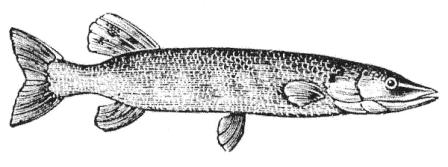Mackerel Prepared Many Ways
Some mackerel and bluefish recipes and more annotations even than usual at britishfoodinamerica
We like these recipes for mackerel or, especially during summer in New England, bluefish cooked in alternative ways and served with alternative traditional (and not so traditional) sauces. Mackerel and its cousins are disdained by most Americans as ‘fishy,’ but they are nutritious and delicious when fresh and cooked properly. Mackerel and blues also are eminently sustainable fish, another bonus in this age of ecological anxiety.
Mackerel vary considerably in size, from an individual serving shaped fish of less than twelve inches to “‘giants’ of exceptional dimensions… sometimes taken in the western Atlantic.” (Alan Davidson, North Atlantic Seafood , London 1979, 126) Blues vary similarly and the American authorities impose no limit on the size of your catch.
Our consideration of mackerel must, however, entail a precautionary principle. The fish, and even more so blues, must be fresh to the point of aquiver. The prolific Henry Smith, author of the midcentury Master Book series on cooking various foods, put it well:
“To be eaten in perfection, this fish should be very fresh, as it soon becomes unfit for food. When fresh, it is quite stiff, opalescent, with bright, protruding red eyes. Avoid limp mackerel, as they can be quite dangerous. No fish can be more unwholesome when stale.” (Henry Smith, The Master Book of Fish , London, undated but 1949, 126)

Oily fish mates with acids and, although it is not popularly associated with Britain, a charcoal grill. In any event, the classic English sauces for mackerel work so well with most char-grilled fish that it is a method that demands our attention. First, however, here is a traditional recipe for mackerel baked in cider. These are easy recipes for inexpensive fish, and for sauces that are fast and impossible to ruin.

